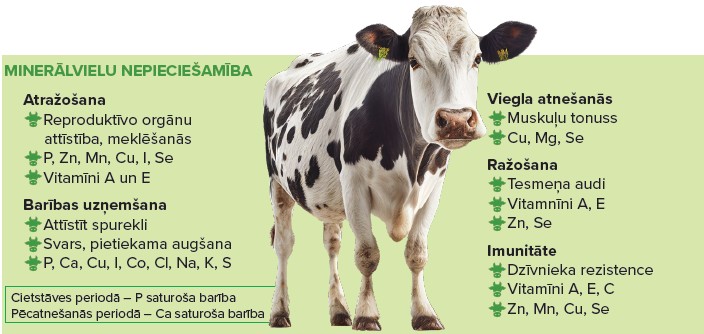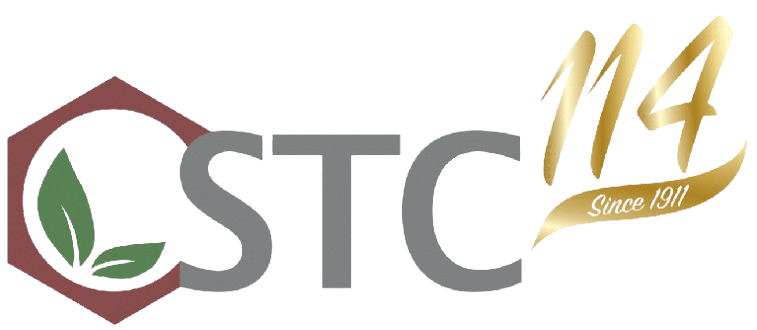
Better availability of micronutrients strengthens the animal's white blood cells, which helps it to better fight mastitis and other infection-causing bacteria. Minerals have an important effect on feed digestion.
Coarse forages contain minerals, but in insufficient quantities and in an unbalanced way. For the health of the animal and for the production cycle controlled feeding of minerals and vitaminswhich is achieved with a balanced mineral feed.
📌 Many years of experience have shown that organic farms mainly purchase minerals to supply their animals saltbut this alone is not enough - other macro and micro elements are also important.
When starting the grazing season, it is important to add minerals containing magnesium. They will help to balance potassium, calcium and magnesium ratios and prevent animals from contracting pasture tetany.
🔹 Plant species
🔹 Soil mineral content and pH value
🔹 Fertiliser
🔹 Weather conditions during the growing season
🔹 Feed preparation technologies
⚠️ The minerals most commonly needed in feed (especially calcium, phosphorus and sodium) are in short supply.
The following are authorised for use in organic farming mineral feedcontaining organic trace elements in chelate formderived from natural raw materials (not artificially synthesised). They are better used by the animal.
🧂 table salt
🪨 chalk
🧱 Freshwater lime
🔥 ash
🧪 phosphates etc.
Currently available on the market ready-mixtures for each species and group of animals.

| 🧩 Function | 🧪 Required elements |
|---|---|
| Unpicking | P, Zn, Mn, Cu, I, Se + vitamins A and E |
| Feed intake | P, Ca, Cu, I, Co, Cl, Na, K, S |
| Easy calving | Cu, Mg, Se |
| Manufacturing | Body tissue, vitamins A and E, Zn, Se |
| Immunity | Vitamins A, E, C, Zn, Mn, Cu, Se |
| Period of hardening | P-containing feed |
| The post-recovery period | Ca-containing feed |
📘 Part A of Annex III to Regulation (EU) 2021/1165:
✅ Macronutrients:
Calcium carbonate, gluconate, monocalcium phosphate, dicalcium phosphate
Magnesium oxide, sulphate, chloride, carbonate
Calcium-magnesium phosphate
Calcium sodium phosphate
Sodium chloride, bicarbonate, carbonate, sulphate, chloride
📘 Part B - micronutrient mixtures:
Iron (II) carbonate, sulphates
Potassium iodite
Cobalt salts
Copper (II) oxide
Manganese (II) oxide
Zinc oxide
Sodium selenite
Selenium-enriched yeast Saccharomyces cerevisiae
⚠️ Important! Keep an eye on the ingredients - mineral feeds often contain:
sugar beet molasses
synthetic amino acids
bran as an anti-caking agent
❌ Organic farming not allowed:
synthetic amino acids
non-organically produced bran
📏 The quantity of molasses must not exceed 1% from dry matter of feed of agricultural origin.
📌 Synthesised is allowed Vitamins A, D and E Use for ruminantsand for other animals and birds no restrictions.
📣 If you have any questions or concerns, contact our experts!
Have a successful new production season!

To provide you with the best experience, we use technologies such as cookies to store and/or access device information. Consenting to these technologies will allow us to process data such as browsing behaviour or unique IDs on this site. Not consenting or withdrawing consent may adversely affect certain features and functionality.